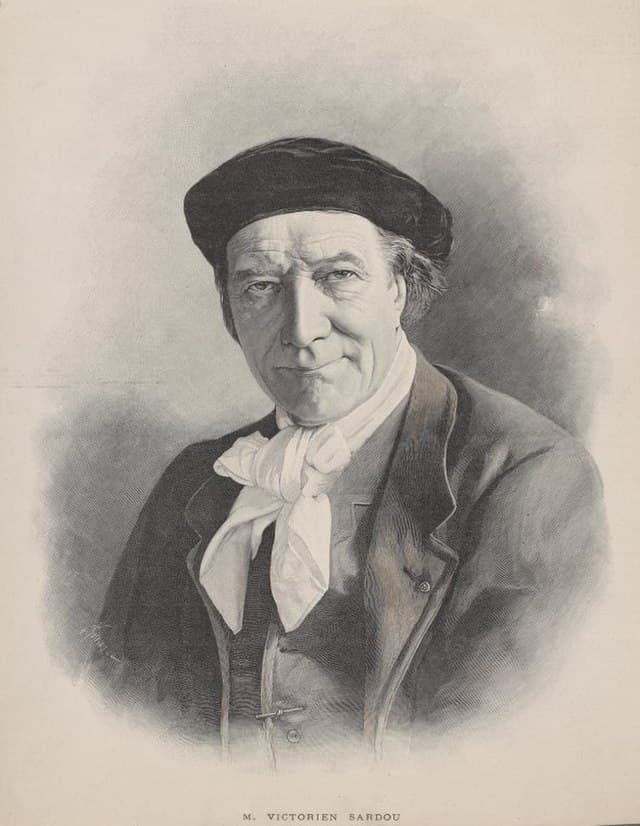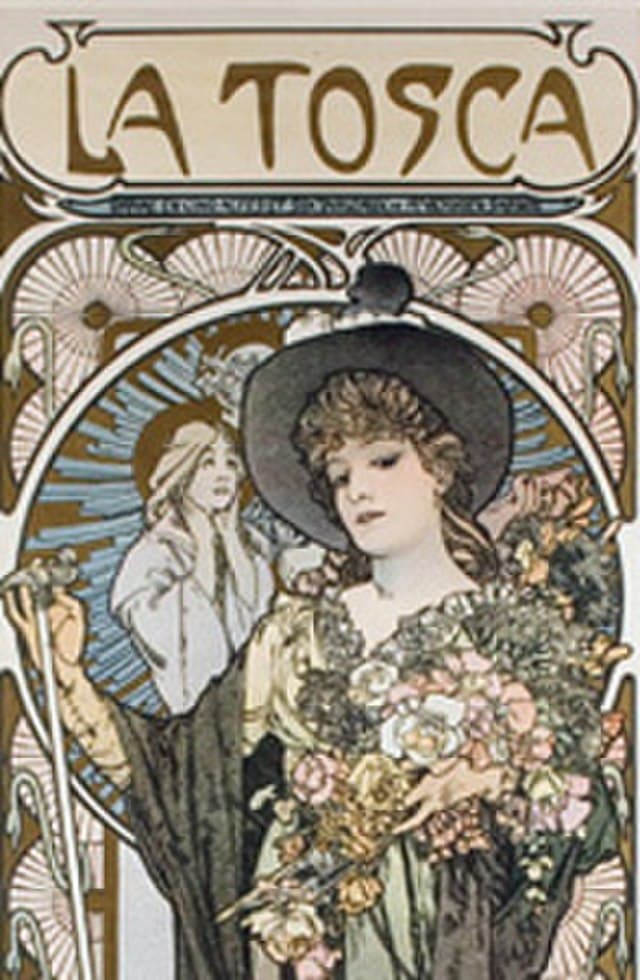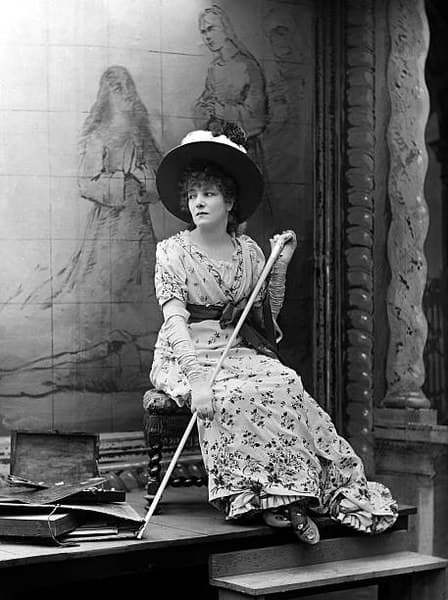Tosca online course by Dr. Carol AndersonPart 3. Playwright Sardou’s Shabby Little Shocker
by Dr. Carol Anderson
Playwright Victorien Sardou (1831-1908) was a consequential force in French drama of the nineteenth century. He is most known from continuing the work of Eugène Scribe in developing the genre of la pièce bien faite (the well-made play), which emphasized compelling plot and narrative over characterization and deep ideas. This genre dominated playwrighting well into the twentieth century, with adherents including Oscar Wilde and W.S. Gilbert in England, and Lillian Hellman and Arthur Miller in America. George Bernard Shaw was a vocal detractor, referring scathingly to Sardou’s work as “Sardoodledom.”


Sardou’s grandfather served in Napoleon’s army as a surgeon, and Sardou maintained a lifelong interest in the Revolutionary Wars, which served as background for six of his plays. Sardou wrote La tosca as a star vehicle for the legendary actress Sarah Bernhardt, for whom he had already penned Fédora and Théodora. The weeks leading up to the premiere were fraught with accusations of plagiarism from writer Ernest Daudet, who swore that he had already created a drama around the Battle of Marengo, the historical backdrop for La tosca, featuring an opera singer as the heroine. Daudet eventually “permitted” the production of Sardou’s work, though Sardou continued to deny the accusations. The plot of the play was spoiled ahead of time. French journalists were typically allowed at dress rehearsals with the understanding that details of the performance would remain under wraps until after the premiere. However, the plot was published in a French periodical the morning of the premiere, and Sardou subsequently sued for and was awarded damages. Despite the turbulent production period, the premiere on November 24, 1887 was an unqualified audience success, with thunderous ovations for the performance of the diva star. The initial Parisian production ran for 200 performances.
Critical reception of La tosca was far less positive, with one French critic deriding the play as a “vulgar piece, without intrigue, without characters, without morals.” Many audiences were horrified by the heroine’s “unchaste” behavior, the violent torture of Cavaradossi, and Tosca’s dramatic suicide at the end. American critic warned Stateside audiences, particularly female attendees, of scenes “not only shocking to the nervous system and grossly offensive to persons of true sensibility, but which might inflict irreparable injury on persons yet unborn.” Perhaps the most famous (and most prescient) criticism came from the aforementioned Shaw, who deplored the play as an “empty-headed turnip ghost of a cheap shocker” that would make a good opera. Despite the shock, outrage, and contempt this play at times inspired, La tosca enjoyed more than thirty years of steady performances worldwide, including three thousand showings in Paris alone. The play inspired novelizations, silent film adaptations, and even a parody entitled “Tra-la-la Tosca.” Sarah Bernhardt continued to perform the role well into the twentieth century, touring the world beginning in 1889. While performing in Rio de Janeiro in 1905, Madame Bernhardt broke her leg executing Tosca’s dramatic death leap, an injury which never fully healed. Ten years later, doctors were obliged to amputate her leg– “vissi d’arte” indeed.






